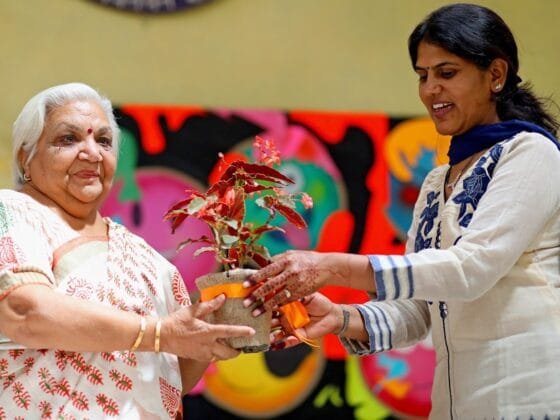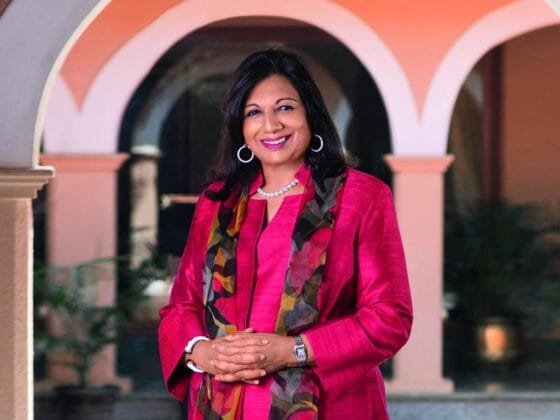
India, also termed Bharat Mata, has a long old tradition of eliminating gender gaps. From mythologies to historical backgrounds, every gender has played a significant role in India. If there are male gods like Brahma, Vishnu and Shiva, there are goddesses like Saraswati, Laxmi and Parvati. Things didn’t end here; there are various incarnations of these gods as a combination of male and female (The Ardhanarishwar Mahadev), depicting the importance of the third gender in India.
Also, if we peek into our history from Ancient times, we have found traces that show the prominence of a matriarchal society in India. Various historians believed that Indus Valley Civilisation was a civilisation dominated by women.
Then, what led to the emergence of these wide gender gaps today? And what measures have been taken so far to fill in these gaps?
To answer these questions, we need to understand the chronology or trend of women’s position in Indian society.
Trend Of Gender Gaps In The Indian Society

Till the Rigvedic period, women enjoyed equal status with men. They were provided with equal opportunities in every sphere of society. Say it political, economic, or social. They actively participated in state assemblies and played a significant role in determining state policies. They were highly respected and considered the better half of their husbands. We all know the famous sage of Vedic India, GARGI and MAITREYA. They are appropriate examples depicting the strength of women in the Rig Vedic period.
From the post-Vedic time till today, the position of women has been deteriorating. Beginning of the Christian era, the Mughal rule and brahminical tyrant code of conduct were the main causes. Sati pratha banned widow remarriage, and polygamy started after the Rig Vedic period.
Although under British rule, there were some steps taken for the upbringing of women. Like in 1829, Sati Pratha was abolished, and in 1856 widow remarriage act was passed. But due to a lack of serious implementation, there were no satisfactory results.
It was after 1945 that women in France got the right to vote. But India was one of the few countries that provided women with universal suffrage rights after gaining independence from colonial rule.
Initiatives By The Indian Government After 1947

In 1947, when the constituent assembly of India was drafting our Constitution, they already knew the challenges in front of them. Besides political, economic and religious menaces, They were aware of rising gender disparity. For this, they added the provision for Social Justice at the beginning of the Constitution itself, i.e. in the Preamble. Social justice is a small term carrying a wide meaning. It protects the person’s right to be treated equally, and there should be no discrimination on the grounds of Race, Religion, Colour, Caste and Sex. Various Fundamental Rights ensure Gender equality rights making them enforceable by law.
After that, there were various Laws and Policies made by the Indian Government to ensure gender equality in the country from time to time. Following are some of them:
Step (Step For Economic Empowerment Of Poor Women)
If you want to empower certain sections of society, you should first make them economically independent and strong. When women were confined to the kitchen and household work, the Government of India launched a scheme to raise women out of stereotypical traps. STEP scheme has been working to empower poor women of India since 1986.
Under this, sixteen years and above, women are entitled to various opportunities to develop skills and receive employment.
In 2014, that; Government revised the STEP scheme under the Ministry of women and child development as a central sector scheme.
Various non-governmental organisations and institutions are being provided with the grant in aid, under different heads such as Agriculture, Horticulture, Weaving, Embroidery etc.
Transgender Persons (Protection Of Rights) Rules
In 2014, the Supreme court of India gave a milestone judgement intending to bridge gender gaps in India. It was for the first time Transgender was recognised as a third gender. Apart from official recognition, the Supreme court recommended various policies and laws for the upliftment of the community through various reservations in the fields of education, health and employment.
Adhering to the recommendations of The Supreme Court, the Government Of India passed the Transgender person (Protection of Rights) Act in 2019. It came into effect on 10 January 2020.
Under this Act, the definition of Transgender is stated. It Prohibits discrimination against trans persons in employment opportunities, fields of education, medical institutions or any public services.
Beti Bacho Beti Padhao
If a boy is being educated, you educate only him. But if a girl is being educated, the whole society gets educated. To educate girl children and correct the unbalanced sex ratio, the Government Of India launched a campaign on 22 January 2015.
Today amidst India’s rural areas, some families still want only a boy child, and at the birth of a girl child, they either kill the child or raise her like a Bonded Labour, devoiding her of necessities.
The initiative is jointly run by three ministries, namely, the Ministry of Education, women and child development and the Ministry of health and family welfare.
Sukanya Samriddhi Yojna
If we think of the main reason behind not wanting a girl child, we will all agree that today also, there are families for whom raising a girl child is far more expensive than raising a boy child. Raising a girl child feels like a burden for many families belonging to a poor section of society. This leads to less education among girls because a major amount of savings goes into marriage.
The Government Of India Launched Sukanya Samriddhi Yojna on 22 January 2015 as a part of the Beti Bachao Beti Padhao scheme. Under this, a saving bank account is being opened in the name of a girl child, which would act as a safety deposit for her future education and marriage expenses. Any parent who has a girl child below ten years of age can safeguard their child’s future by opening an account in any public or private bank in her name.
Various other laws and rules
Various other rules and laws are being made for bridging the gender gap in India; some of them are the Maternity Benefit Act 1961, Equal Remuneration Act 1976, Protection of women from domestic violence act 2005, and Prohibition of child marriage act 2006 etc.
Conclusion
India was the second country in modern history that had Women Prime Minister; INDIRA GANDHI. From 1947 till today, gender gaps have shrunk, but India has a long way to go for it to reach zero.
Because No matter how many laws, policies or initiatives are being launched by the Government. Until and unless people are unwilling to change their mindsets beyond strongly traditional stereotypes, no tough changes can be made to ensure gender equality.

 Add to favorites
Add to favorites







